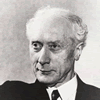the Alexander Technique
What it is
The Technique is a way of developing awareness to such an extent that great personal changes can be made. It is used by all sorts of people from all walks of life, not just specialists, who wish to improve their lives and get the best from themselves. They may come because of backache or poor posture, but they gain much more.
Benefits
New feelings of confidence, lightness and freedom can replace those of discomfort, tiredness and the inability to cope as restricting postural and mental habits are released. It is very much a self-development tool.
Why it is useful
Young children have an alertness and poise that allows them to sit, stand and move gracefully without strain, yet rarely do we see the same in adults. Most of us have developed habits that interfere with our good use - our natural co-ordination and functioning. And because habits become second nature we are not even aware of them.
The result of this misuse may be experienced as specific symptoms such as headaches, backache, RSI, stiff neck and shoulders or more generally as a lack of poise and vitality or a sense of being 'out of touch' with our body. Since the body and mind are interconnected, any physical problems can affect our state of mind and our ability to cope with life. We find ourselves reacting automatically rather than considering our options.
In Business
With so many working days lost due to backache and stress there is a cost effective role for the Technique in occupational health schemes enabling people on long-term sick leave to make a faster recovery.
It is not enough to supply the 'correct' furniture. People need to know how to use themselves in a good way and not be dependent on equipment. A wise company would incorporate personal development alongside regular business training as a preventative measure.
Background

F.Matthias Alexander (1869-1955) was an Australian actor and reciter who developed voice problems during performances to such an extent his career was threatened. After many years of patient observation and experiment, he developed a new approach to co-ordination and movement. In doing so he not only solved his vocal problems but also brought about remarkable improvement in his general health.
